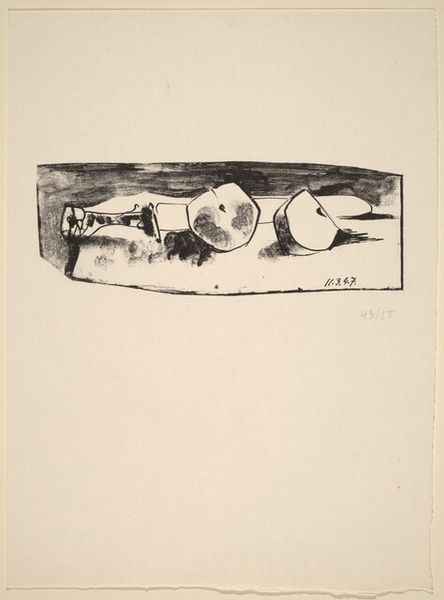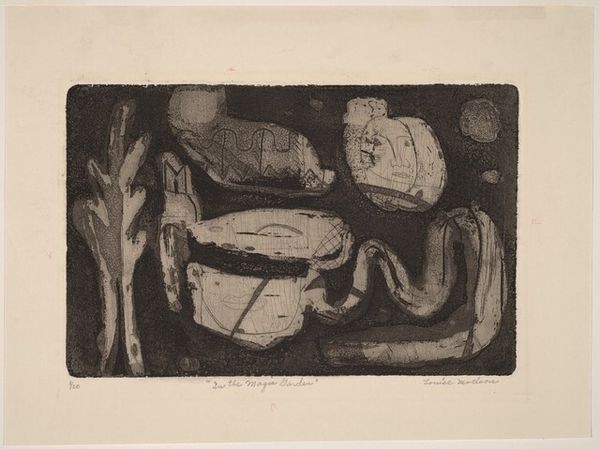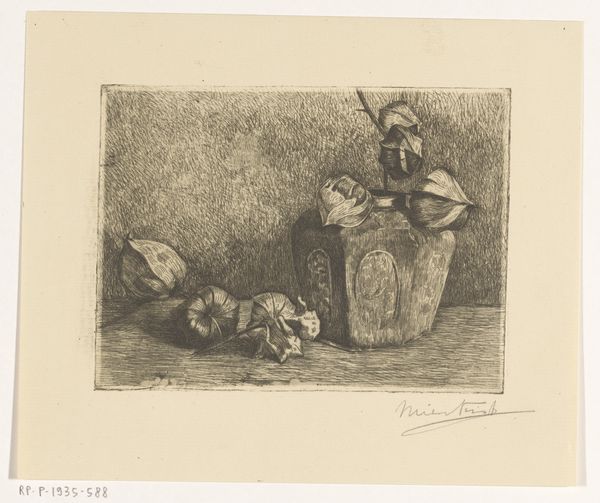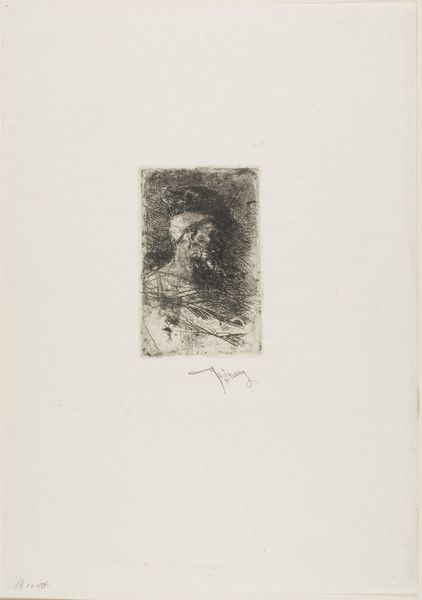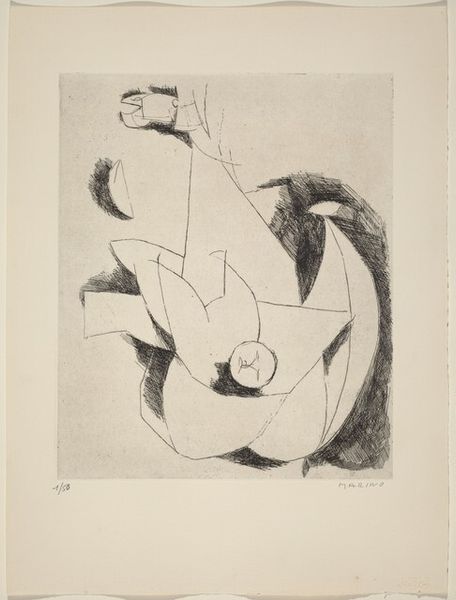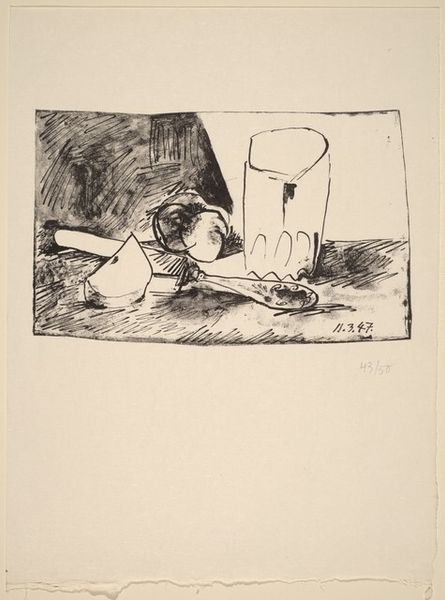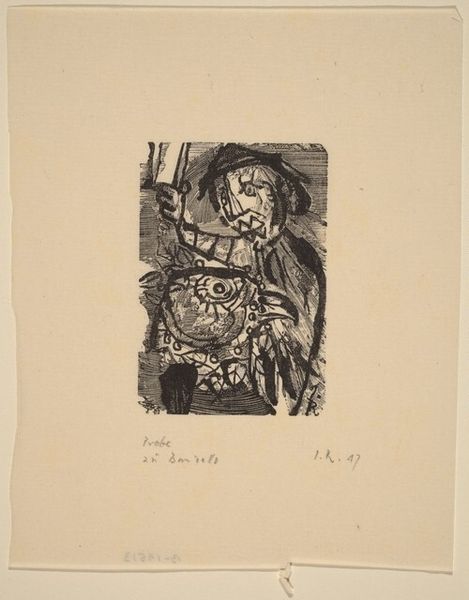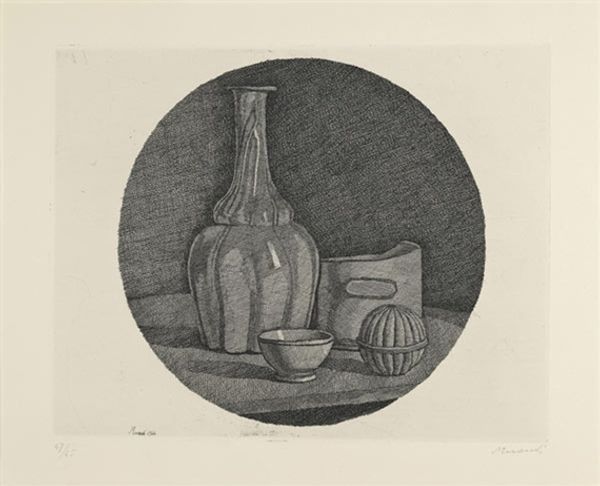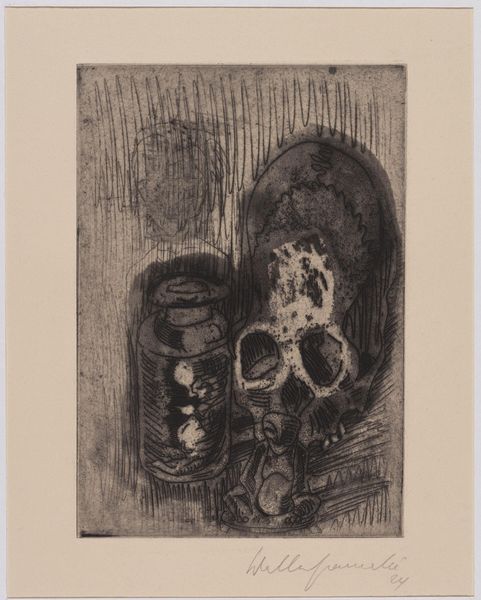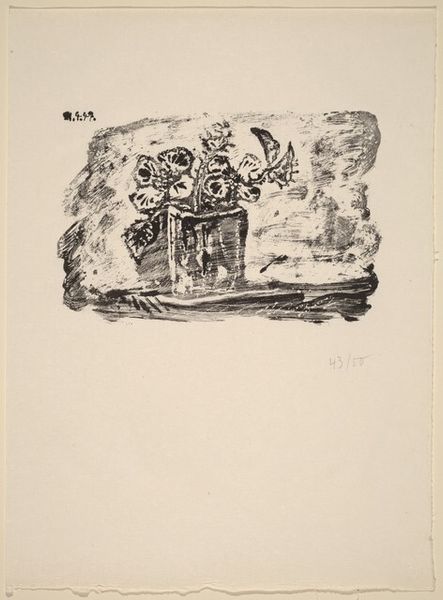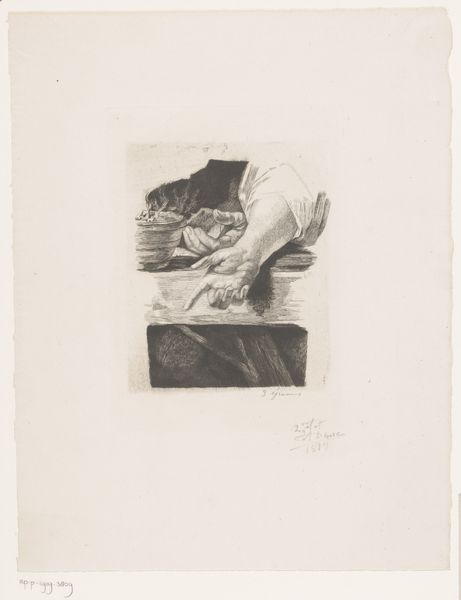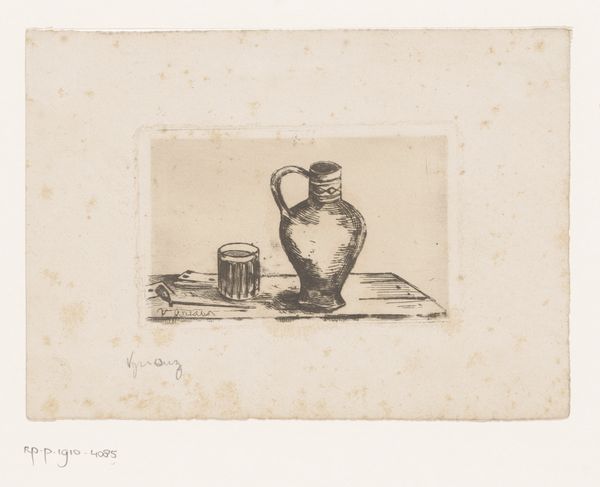
lithograph, print, ink
#
cubism
#
ink drawing
#
lithograph
# print
#
pencil sketch
#
old engraving style
#
ink
Copyright: National Gallery of Art: CC0 1.0
Curator: Let's turn our attention to Picasso's "La Tasse et la pomme," or "Cup and Apple," a lithograph from 1947. It's a still life, rendered primarily in black ink. Editor: My first thought is how stark it is! The heavy lines create deep shadows that lend an almost melancholic mood, even with such everyday objects. The visible lithographic texture suggests a raw, immediate quality to Picasso's hand. Curator: The simplicity is striking. It was created not long after the Second World War, and looking at it through that lens, one can read a deliberate turn away from the elaborate ornamentation seen in some pre-war art, an aesthetic choice reflective of a world reconstructing itself. Editor: Absolutely, and it speaks to Picasso’s material choices, as well. Lithography, with its capacity for reproduction, allowed for broader distribution of his vision. These weren’t unique artworks only available to the elite; the medium inherently lends itself to a democratic form of viewership. Look at the paper too. Its quality, its availability would all impact Picasso's ability to work. Curator: I think the work transcends mere representation to grapple with more profound themes. What is the significance of choosing a cup and apple? Does it symbolize sustenance? Domesticity in a time of upheaval? Or, perhaps more abstractly, exploring ideas of fragmentation that cubism initially investigated. We must understand that Picasso was always dealing with representation, which goes far beyond the choice of his items. Editor: I’d argue that considering the physical making enriches those readings, as we discuss symbolism, form and technique can't be treated as mutually exclusive concepts. He has made these commodities. How have those materials enabled his own practice of resistance and survival in that war era. The image invites the observer to think how each material relates to an economy that enables not only his survival but the viewer too. Curator: I completely see your point. By studying the artwork as a labor of wartime constraints and freedoms, we uncover hidden stories about how the means of material production intersect to change cultural perception. Editor: Precisely. It's a humble scene, yes, but its materiality carries a certain kind of power and historical narrative beyond what simply meets the eye. Curator: Yes, and approaching the image this way means thinking deeply not only about art, but social life as a complex, tangled web of interests, people and power.
Comments
No comments
Be the first to comment and join the conversation on the ultimate creative platform.
